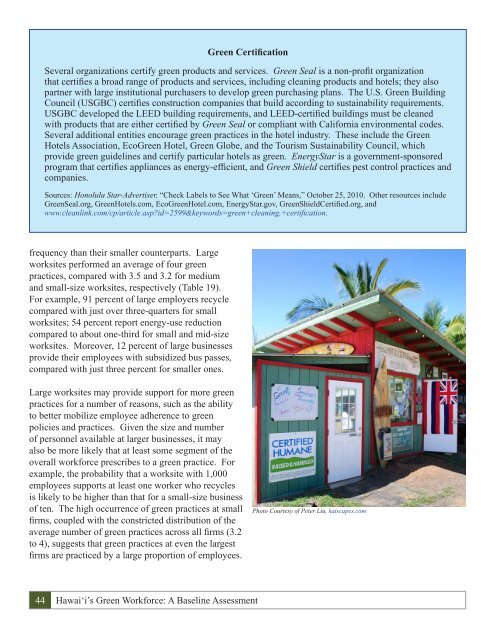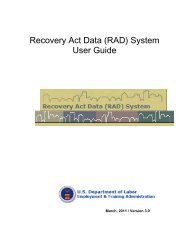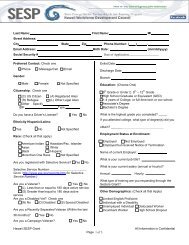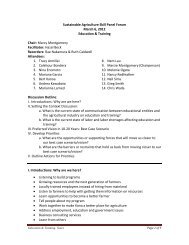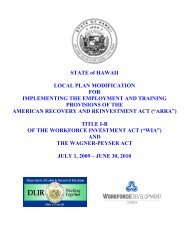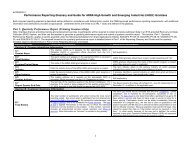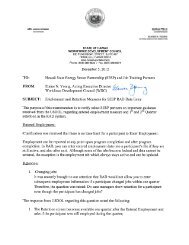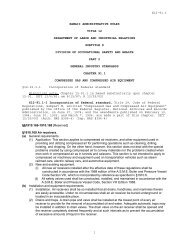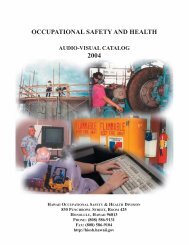Hawai i's Green Workforce A Baseline Assessment December 2010
Hawai i's Green Workforce A Baseline Assessment December 2010
Hawai i's Green Workforce A Baseline Assessment December 2010
You also want an ePaper? Increase the reach of your titles
YUMPU automatically turns print PDFs into web optimized ePapers that Google loves.
<strong>Green</strong> Certification<br />
Several organizations certify green products and services. <strong>Green</strong> Seal is a non-profit organization<br />
that certifies a broad range of products and services, including cleaning products and hotels; they also<br />
partner with large institutional purchasers to develop green purchasing plans. The U.S. <strong>Green</strong> Building<br />
Council (USGBC) certifies construction companies that build according to sustainability requirements.<br />
USGBC developed the LEED building requirements, and LEED-certified buildings must be cleaned<br />
with products that are either certified by <strong>Green</strong> Seal or compliant with California environmental codes.<br />
Several additional entities encourage green practices in the hotel industry. These include the <strong>Green</strong><br />
Hotels Association, Eco<strong>Green</strong> Hotel, <strong>Green</strong> Globe, and the Tourism Sustainability Council, which<br />
provide green guidelines and certify particular hotels as green. EnergyStar is a government-sponsored<br />
program that certifies appliances as energy-efficient, and <strong>Green</strong> Shield certifies pest control practices and<br />
companies.<br />
Sources: Honolulu Star-Advertiser, “Check Labels to See What ‘<strong>Green</strong>’ Means,” October 25, <strong>2010</strong>. Other resources include<br />
<strong>Green</strong>Seal.org, <strong>Green</strong>Hotels.com, Eco<strong>Green</strong>Hotel.com, EnergyStar.gov, <strong>Green</strong>ShieldCertified.org, and<br />
www.cleanlink.com/cp/article.asp?id=2599&keywords=green+cleaning,+certification.<br />
frequency than their smaller counterparts. Large<br />
worksites performed an average of four green<br />
practices, compared with 3.5 and 3.2 for medium<br />
and small-size worksites, respectively (Table 19).<br />
For example, 91 percent of large employers recycle<br />
compared with just over three-quarters for small<br />
worksites; 54 percent report energy-use reduction<br />
compared to about one-third for small and mid-size<br />
worksites. Moreover, 12 percent of large businesses<br />
provide their employees with subsidized bus passes,<br />
compared with just three percent for smaller ones.<br />
Large worksites may provide support for more green<br />
practices for a number of reasons, such as the ability<br />
to better mobilize employee adherence to green<br />
policies and practices. Given the size and number<br />
of personnel available at larger businesses, it may<br />
also be more likely that at least some segment of the<br />
overall workforce prescribes to a green practice. For<br />
example, the probability that a worksite with 1,000<br />
employees supports at least one worker who recycles<br />
is likely to be higher than that for a small-size business<br />
of ten. The high occurrence of green practices at small<br />
firms, coupled with the constricted distribution of the<br />
average number of green practices across all firms (3.2<br />
to 4), suggests that green practices at even the largest<br />
firms are practiced by a large proportion of employees.<br />
44 <strong>Hawai</strong>ÿi’s <strong>Green</strong> <strong>Workforce</strong>: A <strong>Baseline</strong> <strong>Assessment</strong><br />
Photo Courtesy of Peter Liu, kaiscapes.com


